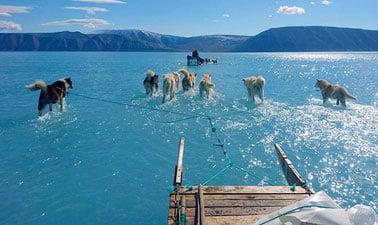MOOC List is learner-supported. When you buy through links on our site, we may earn an affiliate commission.

MOOC List is learner-supported. When you buy through links on our site, we may earn an affiliate commission.
- You will learn from researchers and staff from a variety of disciplines at the University of Alaska Fairbanks’ International Arctic Research Center and its collaborators.
- An introduction to a variety of areas of expertise, from atmospheric science to traditional knowledge on subsistence calendars, will equip you to understand these complex systems and the knowledge-holders who examine them in detail.
- You will develop a basic understanding of climate change in the circumpolar arctic through examining four primary systems: atmospheric systems, marine systems, terrestrial systems, and human systems.
- Key concepts will be explained with practical Arctic-focused examples including Arctic climate modelling, climate policy, physical properties of the ocean, and more.
- You will learn to trace impacts through those complex systems from physical science, through the biodiversity of flora and fauna, and on to the societies that depend on those resources.
- Key texts to understanding environmental change will be made available to participants with guidance, giving you the skills to understand reports and policies impacting the region.
What you'll learn
- Develop an understanding of climate and Arctic terminology
- Compare the four featured systems in the Arctic: atmospheric, terrestrial, marine, and human
- Demonstrate the connected nature of Arctic systems
- Analyze how those systems interact and affect one another
- Interpret climate science reports such as the US Arctic Report Card, Alaska’s Changing Environment, and others
Syllabus
Week 1: Change in our Arctic Atmosphere
- Atmospheric systems and how climate change affects them across the Arctic
- Temperature and precipitation
- Snow, storms, extreme events, and air quality
- Modeling and climate model projections, downscaled projections
Week 2: Change On and Under the Waves
- Ocean temperature & salinity
- Changes in Arctic sea ice concentration, formation, and thickness
- Ocean currents
- Ocean acidification and ocean change
- The marine food web: algal blooms, fish, marine mammals
- How changes in physical properties impact the entire marine food web
Week 3: Our Changing Terrestrial Environment
- Permafrost and terrestrial snow cover
- Glacial ice
- Vegetation
- Wildfire impacts
- Terrestrial animals and ecosystems
- Birds
- Future changes
Week 4: The Human Element
- History of humans in the Arctic
- Food security
- Governance: local and global policy
- Risk and vulnerability assessments
- Infrastructure
- Adaptation actions and multiple stressors
MOOC List is learner-supported. When you buy through links on our site, we may earn an affiliate commission.
MOOC List is learner-supported. When you buy through links on our site, we may earn an affiliate commission.
